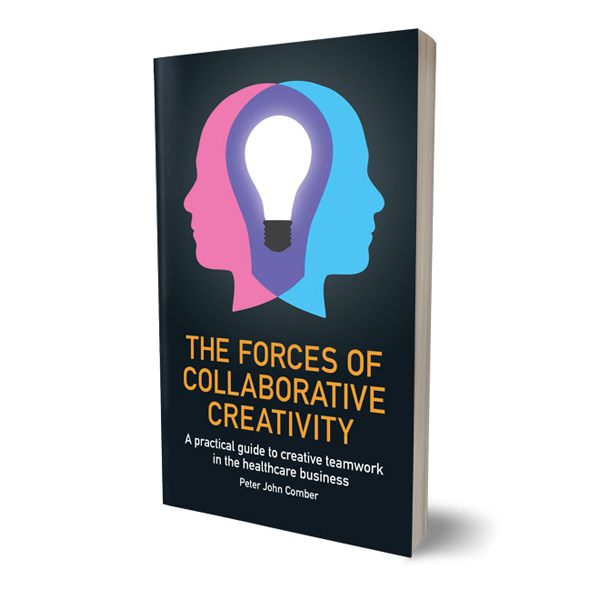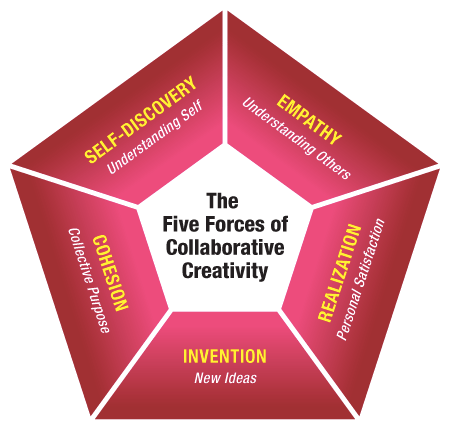
Collaborative Creativity doesn’t only produce ideas, it also focuses on the effects it has on the creators.
Collaborative Creativity is a methodology that involves groups of people in multiple creative exercises and discussions. It is a flexible framework that allows teams to solve problems through highly personalised creative journeys. The destination may be fresh ideas, but the rewards are far greater: group creativity promotes understanding of others and self, it is rewarding for the individual and unites teams.
Collaborative Creativity was developed in the exceptionally complex pharmaceutical sector. The healthcare industry privileges rational thinking, but we, humans, are inconstantly rational and highly emotional beings – our actions are not fully controlled by logic. Collaborative Creativity helps explore the rational-emotional-irrational spectrum and improve the way businesses operate.
Now, you can learn all about Collaborative Creativity in my best selling book (#1 New Release in Pharmaceutical & Biotechnology Industry, Amazon USA and #1 best-seller 'Industria e studi di settore', Amazon Italy) 'The Forces of Collaborative Creativity'.
Collaborative Creativity has proven to be effective for:
- • Understanding the point of view and emotions of others
- • Comprehending and resolving complex issues
- • Improving collaboration within and between diverse groups
- • Uncovering valuable insights, subconscious bias and beliefs
- • Identifying the shared values of a given group
- • Generating co-authored ideas and strategies

With over 35 years of professional experience, I am an expert in applied creativity and I know that a group of people who methodically apply their collective imagination to an issue achieve very different results than the same group of people merely discussing the same issue. The Collaborative Creativity methodology evolved from my unique practical knowledge of the power of group creativity and now, in my book, ‘The Forces of Collaborative Creativity’ you can learn about:
- • The five forces of Collaborative Creativity: Invention, Empathy, Self-discovery, Realisation and Cohesion
- • Numerous real-world practical applications of Collaborative Creativity in the pharmaceutical sector where external stakeholder and market complexity and internal organisation are particularly challenging
- • The eight principles of Collaborative Creativity and how to design a session
- • Moderation guidelines for Collaborative Creativity sessions
- • Types of Collaborative Creativity exercises and how to personalise them.
Recognising the value of creativity only in the ideas it produces is reductive - businesses that understand Collaborative Creativity, benefit in many ways from its positive effects.